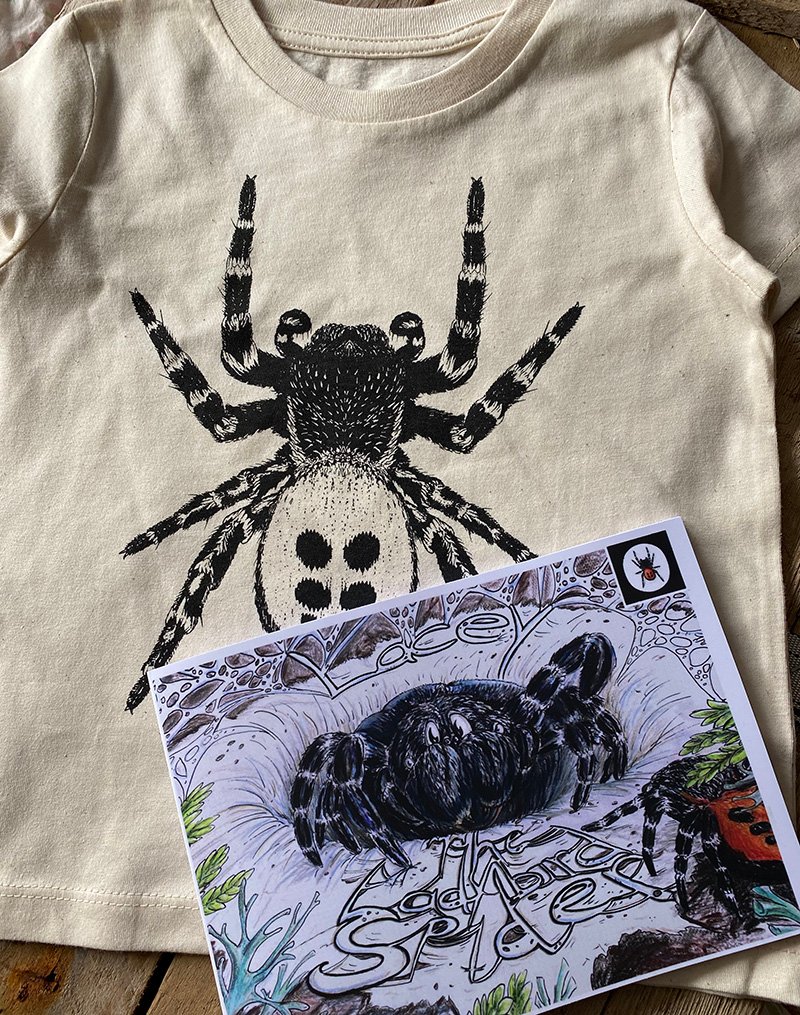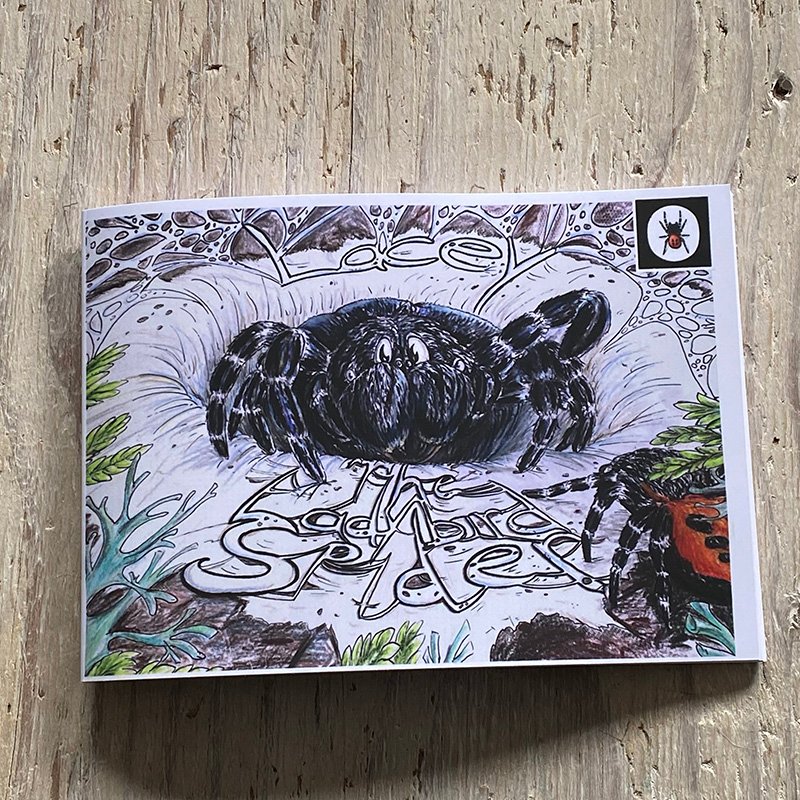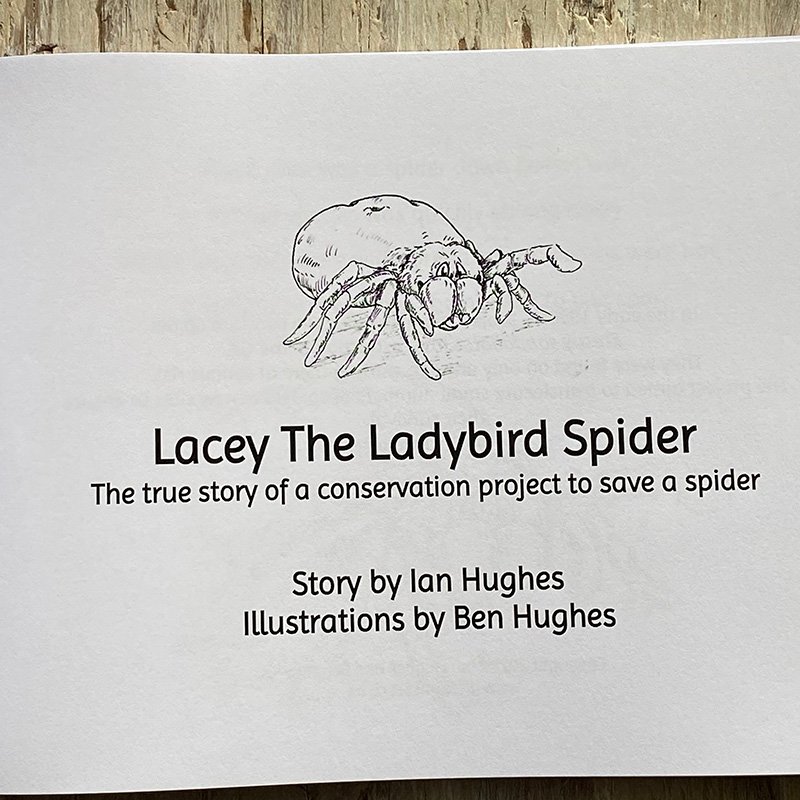It’s all about the Ladybird Spider for us at the moment. Last month we conducted another ladybird spider translocation on the Dorset heaths. Today we launch our newest book, Lacey the Ladybird Spider along with our Ladybird spider T-Shirts. This Easter, our ladybird spiders will be on CBBC’s Deadly Predators starring Steve Backshall… he gave me a T shirt to prove he was here; Ben drew his caricature which Steve took away. You may wonder what we have to do with the ladybird spider – here’s just a little bit about it…
What have Lifeforms got to do with Ladybird Spiders?
- In 1993, Ian became a member of the national Species Recovery team for Ladybird spiders.
- Because they are so rare in Britain we went to Denmark to study how they live and to attempt captive breeding to find out more about their life cycle and needs.
- In 2000, we attempted the World’s first ever ladybird spider translocation under contract from Natural England.
- From 2000 to 2022 we have conducted 21 translocations and learned much more about the spiders.
- We have worked with many organisations to re-establish this species. Including 7 nature reserve owners, where we have mentored rangers how to work with Eresus.
- Our translocation method has also been used in Belgium
- The project has been in the national papers and TV with Ian appearing on The One Show, Autumnwatch and… this Easter; CBBC’s Deadly Predators. Although we think it might be a very short piece.
- Last year, Ian was awarded membership of the IUCN’s Species Survival Commission in recognition of his work to save the ladybird spider from extinction.
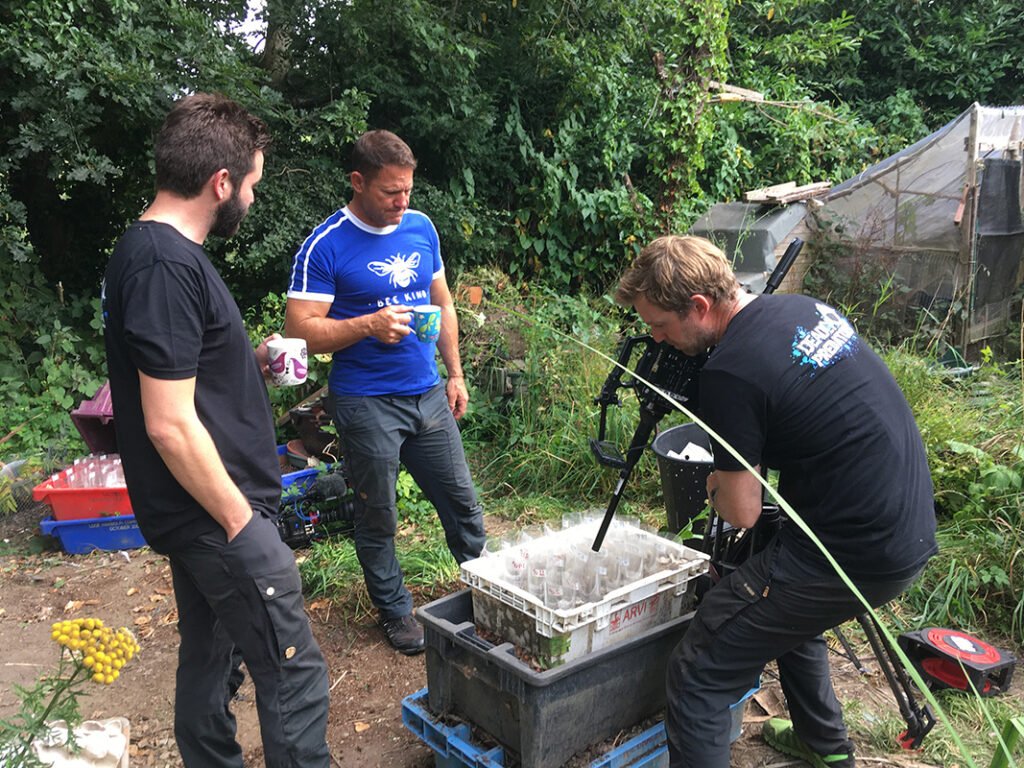
Ladybird Spider Facts
- The Ladybird Spider (Eresus sandaliatus) is one of Britain’s rarest and most threatened spiders. It is one of only two spider species with legal protection in the UK under Schedule 5 of the Wildlife and Countryside Act (1981).
- It is Britain’s only member of the family Eresidae – the velvet spiders. These are old world spiders not found in the Americas.
- Eresids are cribellate spiders or lace-web weavers. This means they have a comb (the calamistrum) on each back leg and a spinning plate (the cribellum) on their abdomen. These allow them to spin woolly silk that is very strong.
- Found only on dry Dorset heathland. Eresus was thought to be extinct for over 70 years until its rediscovery in 1980.
- The spiders were so few in number that their discoverer, the arachnologist Dr. Peter Merrett, performed a dating service by moving wandering males to the webs of mature females to ensure successful breeding.
- Ladybird spiders live in vertical burrows about a finger-length deep, covered with a tent they build from silk.
- They decorate the outside of their silk tents with the remains of their prey like hunter’s trophies
- Females and all young ladybird spiders have a satin lustre and grey-black fur. The front end (cephalothorax) is grizzled with silvery white hairs.
- They mature at 3 to 5 years old and then breed only once
- Male ladybird spiders look just like females until their final moult, when they transform into one of the World’s most striking spiders. They have a red abdomen adorned with black polka dots and black and white stripey legs.
- After at least 3 years living in a burrow, it is only the males, near the ends of their lives, that leave their webs on warm spring days to find a mate. Having mated perhaps 3 times, they die.
- Mated females lay about 50 eggs which they wrap in a disk of silk before sealing themselves into their tent creating a silk cell.
- The mother spider feeds the spiderlings with a fluid from her mouth and slowly withers and dies. There is speculation that the young then continue to take fluids through the skin of their dead mother but I have not seen this.
- Her babies spin silk tunnels within her tomb and gradually extend them out to create their own webs using the central nursery/tomb web to capture prey communally. This allows them to catch prey much bigger than themselves.
- Ladybird spider was the name given to this species by Peter Merrett in 1981. This was as a common name to use in the Wildlife and Countryside Act documents. He prefers to call the species, Eresus, as do I. It was formally known as the velvet spider or velvet lace web spider. Also known as ‘carmine jumping spider’ although it is not a jumping spider. Its scientific name has change from Eresus nigerto Eresus cinnaberinus to E sandaliatus

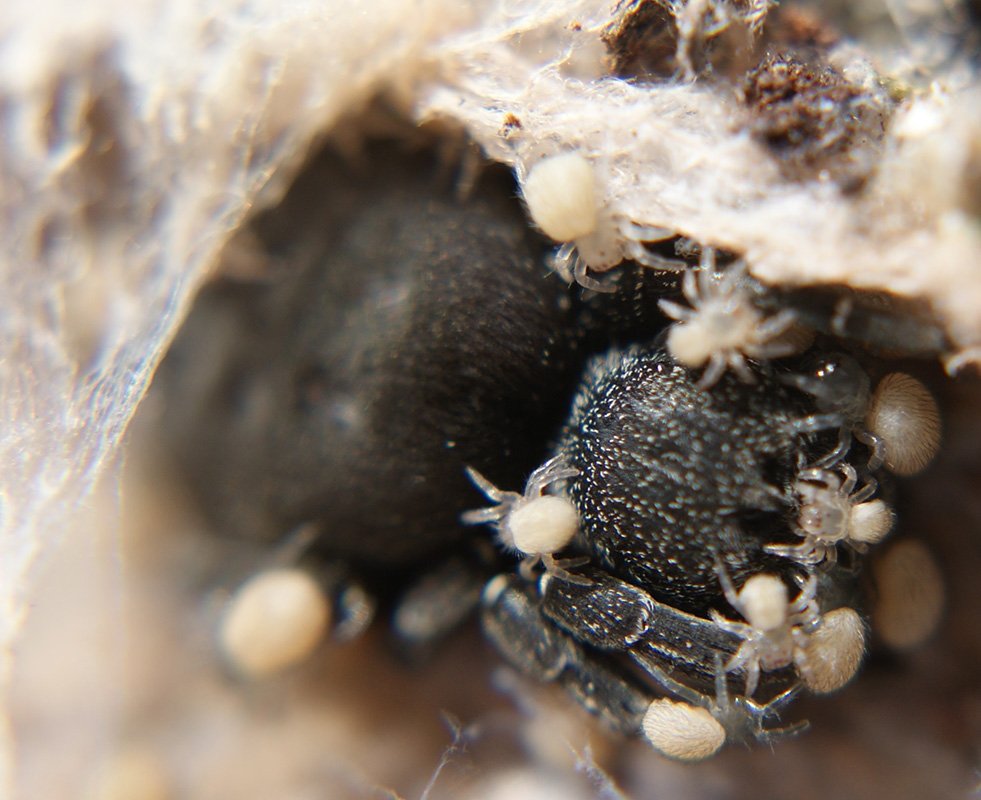
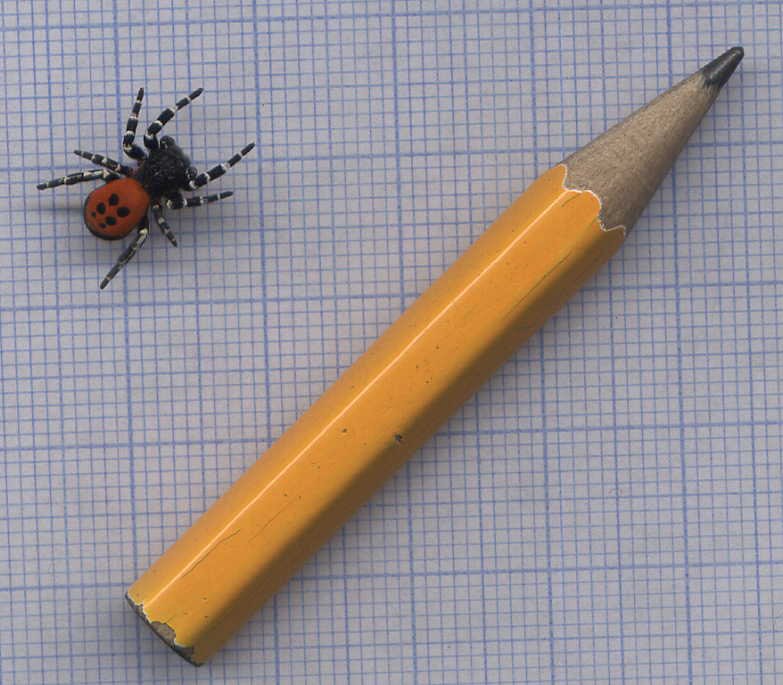
What we have learned about ladybird spiders
- Most webs are built in moss and lichen on peaty soil
- From examining webs we have found that ladybird spiders eat mostly ants and small beetles. They were already known to eat large beetles which are much more obvious in the webs.
- Although they feed mostly by trapping prey in their webs, we have seen spiders leave their webs and wrestle prey (beetles) back to their burrows.
- Ladybird spiders decorate their webs not only with prey but with plant debris and even small pieces of paper which were deliberately torn from a bigger sheet. Decorating the web probably helps camouflage it but also, the decaying material probably attracts dung beetles and ants. We often find bees in the webs which may mistake the aroma of the webs for the abandoned shrew or mouse nests, where they found their colonies.
- Ladybird spiders rarely disperse more than a metre a year from the maternal web. So growth of the range of a population is usually very slow. This is partly because they disperse via the silk tunnels they have to build, but also because they are partially communal… they like to stick together.
- Dispersal, when it happens tends to be southwards. I think this is partly due to males following the prevailing wind. Also partly due to the height of vegetation and the shade and sun traps it creates.
- Female spiders build their nursery webs at the surface where they receive full sunlight. This is essential to growth and development. Spiders also seal themselves into their tents to moult at the surface and are dependent on the tent to feed. This makes them highly vulnerable to trampling by humans and livestock who might never know they were there, as the webs are very efficiently camouflaged. This makes sticking to footpaths and keeping dogs on leads all the more important on nature reserves which are opened as amenities but are home to very vulnerable species such as ladybird spiders, delicate plants and ground nesting birds. Years of work can be undone by one careless twitcher or dog walker despite good intentions.
- Until she lays her eggs, the mother spider, has the option of retreating down her burrow to safety. But from June until the following spring, she and her young are trapped at the surface and young spiders remain in silk tubes, invisible in the vegetation for their first year before beginning to dig a burrow.
- Ladybird spider webs become messy or disappear if in the shade of tall vegetation or trees. The best landscape for this species is very low vegetation about 10cm high or less. They do particularly well amongst Cladonia lichens (reindeer moss) and dwarf gorse.

What we hope to achieve, with your help, through our new book and T-shirt
Our book – Lacey the Ladybird Spider – is a fun way for people of all ages to learn the story of the ladybird spider and about spiders and conservation in general. We hope it will be enjoyed as much by arachnophobes as it is by arachnophiles.
Ben has created endearing spider characters to explain the amazing life story of the ladybird spider and the conservation project. It is written in our usual rhyming form, so it can be used as a bedtime story book. Our aim to help empower the youngest naturalists and conservationists. It is very important for children to engage with nature very early in life (pre-school). This will give them the best chance of fully understanding and appreciating it. Older children often struggle to gain an interest or understanding in the diversity of nature, though they may gain more focused interests such as birds or butterflies.
The ladybird spider T-shirt is intended to raise awareness that spiders are fascinating and need conservation and understanding just as much as the more popular species. Invertebrates make up over 90% of all animal life. They run the planet, provide our food and are a lifetime of fun and interest for anyone who gets involved.
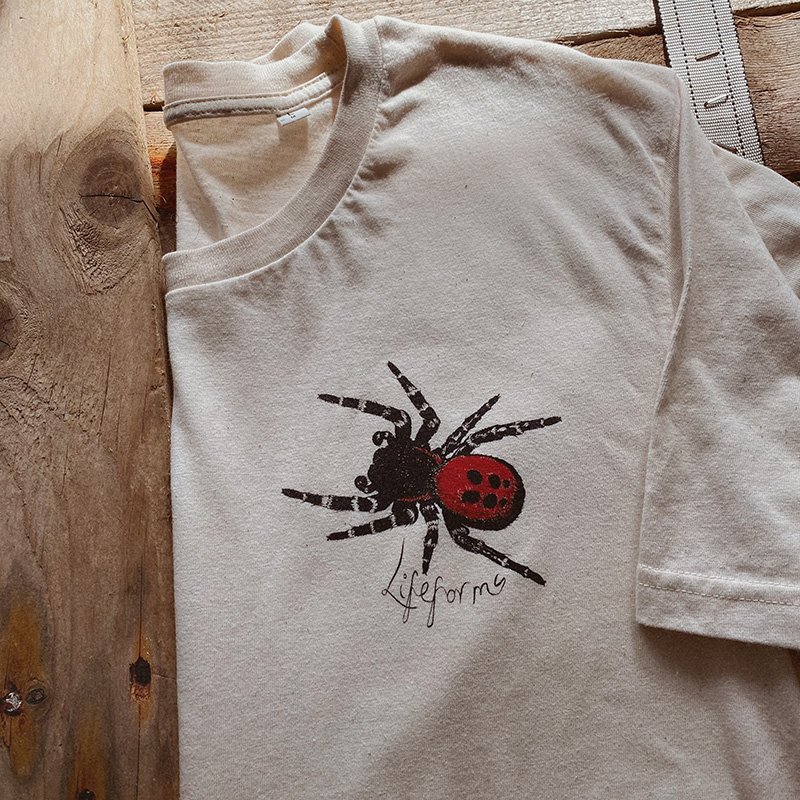
Your ladybird spider T-shirt will create opportunities for you to talk about spiders, invertebrates and nature conservation – it’s important! It helps fund our work and raise awareness for the natural world helping you lend your voice to the species you care about. The T-shirts comes with an information card about ladybird spiders.
The spider depicted is a mature male, drawn from life by artist Ian who is the UK’s Eresus conservation expert. It is Eresus sandaliatus, the British and north European species which does not have white rings around its polka dots.

